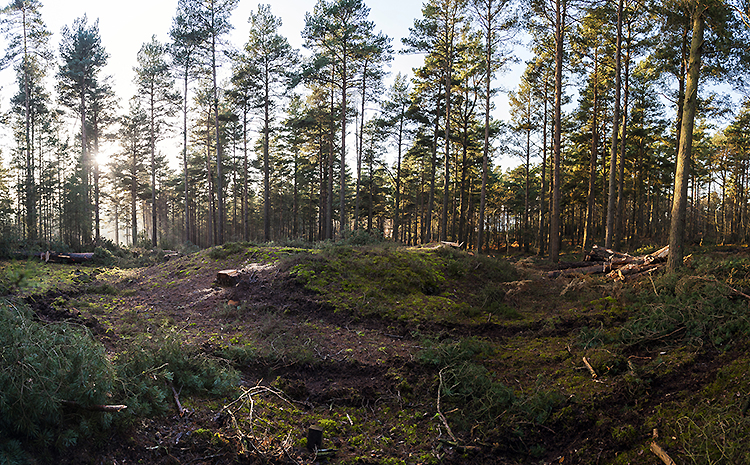




Some of the large stones which may, or may not, have been part of the original cromlech.

Panorama showing the relationship with the shoreline.

Viewed from the rocky outcrop alongside the tomb.

Just after the 30 Geology students from Cardiff Uni departed having kindly pointed out that there were also some stone circles down the end there (the hut circles of St. David’s Head camp). Cheers guys.


Panorama of the older, outer walls and the reinforced inner IA wall. The entrance is on the far left.

Parallel walls built before the reinforcement of the camp in the iron Age.

The large stones in the foreground make up the kerb to the entrance and are part of older, pre-Iron Age walls.

The entrance/exit of the camp through the Iron Age bank.

One of the larger and more obvious hut circles.

From this elevated position we could make out 6, possibly 7, hut circles.

Note the strange little hummock next to the track that the bank goes around. What’s that all about?





Cairn built from scooping out pond or was the pond already there and of some significance?

Our first foray in to Welsh prehistory, photographically that is!

I wondered at the time if this was part of a stone avenue and checking on MAGIC that seems to be correct. It’s alongside the track heading East.

A bit like a lunar landing module nestling in it’s crater.



Posted for no other reason than it was a nice long walk with good weather. It’s all you need sometimes.


A very handsome barrow indeed. Castle Hill is behind to the left standing on a small ridge near Burley Street village.

You can just about make out the ditch surrounding it in this photo. Mrs Cane and Felix for scale.


Awwww Ponies! The barrow’s just behind them on a tiny spur. Viewed from Vales Moor.

The hill fort viewed from Strodgemoor Bottom. Didn’t actually get into the fort’s interior as the light was fading too quickly. Next time.


The view from Vales Moor. Strodgemoor Bottom barrow is just visible on the far right.

View south from the isolated Mount Caburn to the South Downs ridge separated by the River Ouse and Glynde Reach. The dark line in the foreground is the very slight defensive bank of the hill fort’s south side, but at a height of around 150m is barely necessary.


This strange little earthwork is shown as a tumulus on the OS map sitting on the edge of the outer IA ramparts of The Caburn, but it bares little resemblance to any barrow I’ve ever come across.

The view from Caburn Bottom to The Bible Earthwork and field systems. Not sure if these are contemporary with the the surrounding sites or possibly medieval.

The view from the edge of the dreaded Lewes Golf course through Oxteddle and Caburn Bottoms to The Caburn and Ranscombe Camp.

The most northerly of many barrows scattered across Saxon Down. Just below and beyond the trees is Glyndebourne Opera House.


The more southerly of the adjacent barrows in the foreground with the other barrow just visible centre right.

The most easterly barrow and possibly the least interfered with.

The most northerly barrow glimpsed through the trees standing on the edge of the escarpment.


A bit like all those WW1 images we’re being bombarded with at the moment.

The most westerly barrow in its newly cleared space.


The robbed out depression of the most westerly barrow.
Gallows Hill, as the name suggests, was once a place of execution, but long before that it was a Bronze Age barrow cemetery (if you can count four large mounds as a cemetery). It’s part of the larger Graffham Common area which contains quite a large number of tumuli, with barrows at Little and Great Bury nearby. These heathland barrows are typical of the surrounding area, occurring in patches along the northern side of the South Downs at places like Lord’s Piece, Sullington Warren, Lavington Common and Iping Common. In fact it’s fair to say that there are probably more monuments in these areas than directly on the ridge of the South Downs where they are more noticeable, though any signs of habitation, defence, etc. have long since disappeared from the heathland areas, buried by cultivation, villages and towns.
The barrows at Gallows Hill are once again openly visible having spent the last hundred years covered in pine forest with trees actually growing on some of them. Recent cutting and clearance reveals four quite large and handsome mounds in a fairly lofty position on the edge of an escarpment overlooking swathes of woodland and the valley of the River Rother.
A 4,000-year-old skeleton found on farmland in West Sussex was probably a warrior chief who was killed in battle, scientists have revealed.